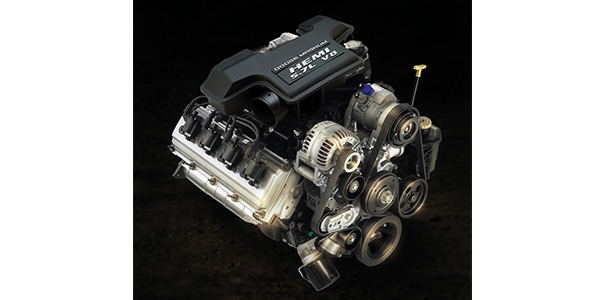
This bulletin involves selectively erasing and reprogramming the Powertrain Control Module (PCM) with new software for the 2010-2013 1500 Ram with the 5.7L engine (sales code EZH) and automatic transmission (sales code DGQ or DG1) built on or before July 17, 2014.
Symptom/Condition:
New PCM software has been released to address a customer’s concern of a drone- or vibration-type condition while driving at highway speeds during MDS (Multiple Displacement System) operation.
In addition, the following powertrain system improvements/enhancements are also included in this software release:
• Improved Electronic Voltage Regulator control to more precisely maintain system voltage.
• Enhanced Automatic Oil Change Indicator (EAOCI) system improvements to switch to a severe duty cycle algorithm anytime the PCM is replaced to ensure the customer receives a timely oil change required message.
• P0300 for Multiple Cylinder Misfire (Only applies to vehicles using a block heater in ambient temperatures greater than -20F(-29C)).
Diagnosis:
Using a scan tool, verify all engine systems are functioning as designed. If DTCs other than the one listed above are present record them on the repair order and repair as necessary before proceeding further with this bulletin.
If the customer describes the symptom/condition or if the technician finds the DTC listed above, perform the Repair Procedure.
Repair Procedure:
Install a battery charger/maintainer to ensure battery voltage does not drop below 13.2 volts. Do not allow the voltage to climb above 13.5 volts during the flash process. If this flash process is interrupted/aborted, the flash should be restarted.
1. Reprogram the PCM with the latest software.
2. After PCM reprogramming, clear any DTCs that may have been set in any modules due to reprogramming.
Courtesy of Mitchell 1.













